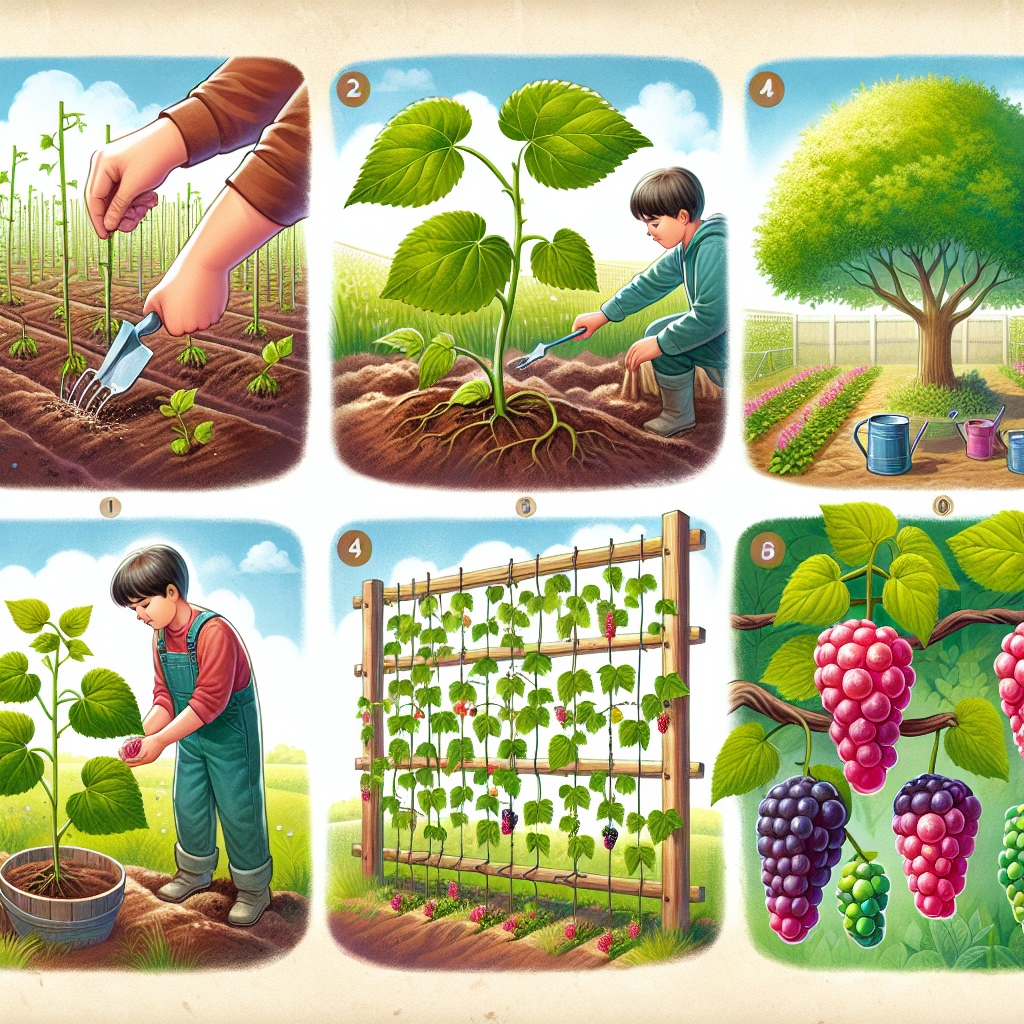Protecting Roses from Deer Browsing
Updated April 17, 2024 at 2:58 pm
Learn effective strategies to shield your cherished rose garden from the persistent appetites of local deer, ensuring your blooms remain untouched and vibrant throughout the season.

Understanding Deer Behavior in Gardens
Deer browsing can be one of the most disheartening challenges you might face as a gardener, especially after putting so much time and effort into nurturing your roses. As graceful as they are, deer have an appetite for tender rose shoots, buds, and even mature foliage, turning your prized garden into their personal buffet.
It is crucial to recognize that deer are creatures of habit. If your garden becomes their chosen dining spot, it’s likely they’ll return. They’re most active during dawn and dusk, and these twilight hours are prime times for them to feast unnoticed. Understanding their behavior is the first step toward effectively protecting your roses.
Optimal Strategies for Deterring Deer
Fortunately, there are several strategies you can employ to deter deer from your rose garden. Creating physical barriers can be one of the most effective methods. Deer fencing needs to be high, about 8 feet or more, since deer can jump pretty high. However, not everyone desires or can afford to install tall fencing.
Alternative physical barriers could include using fishing line to create an invisible barrier or planting thorny or dense shrubbery around your rose garden to make access to your roses less appealing. Making your garden less accessible is an excellent first line of defense against deer.
Choosing the Right Deer Repellents
Deer repellents can range from homemade concoctions to commercially available products. Many gardeners swear by the effectiveness of certain scents and tastes that are repugnant to deer. Homemade sprays using garlic, eggs, or hot peppers can offer temporary protection, but they need to be reapplied frequently, especially after rain.
On the market, you’ll find a variety of repellents, such as Liquid Fence Deer & Rabbit Repellent. Based on reviews, this product seems to be favorably received. Users mention its ease of use and effectiveness, particularly if applied regularly as instructed. It’s said to be safe for plants and can be a good choice for those looking to protect their roses without harmful chemicals.
Find This and More on Amazon
Introducing Plants That Act as Natural Deterrents
Another strategy is to incorporate plants that deer find unappetizing into your garden, creating a natural repellent. Some of these include strong-smelling herbs like lavender or other plants with potent oils. Moreover, deer tend to avoid plants with fuzzy or hairy leaves, such as lamb’s ears. By strategically planting these around your roses, you create a more holistic deterrent.
Perennial herbs can be particularly effective as they last longer than annuals and require less maintenance. Incorporating these amongst your roses can thus be a cost-effective and long-term strategy to keep deer at bay.
Providing Supplementary Feeding Stations
If your local regulations permit and you have the space, you might consider setting up a feeding station away from your rose garden with foods that deer prefer. This could steer deer away from your roses and satisfy their hunger. Keep in mind, though, that while this can be a kind approach, it might attract more deer to your property over time.
Consider this option carefully, and ensure that any feeding stations are set up with the advice of local wildlife experts to prevent unintended ecological imbalances. It is more of a diversion rather than a deterrent, so weigh the pros and cons carefully.
Installing Motion-Activated Sprinklers
Motion-activated sprinklers, such as the Orbit 62100 Yard Enforcer, are popular among those seeking to protect their gardens without causing harm to wildlife. According to reviews, this product is highly regarded for its effectiveness in startling deer and other critters without injuring them. It’s also praised for its sturdy construction and ease of installation.
When activated by movement, the sprinkler releases a burst of water, which scares deer away. Many users appreciate that this is a humane method that also provides the added benefit of watering the garden. Plus, the unexpected noise and movement can be enough to discourage deer from returning.
Find This and More on Amazon
Employing Scare Tactics: Decoys and Sound Devices
Scare tactics can sometimes be an effective method to deter deer. Some gardeners use decoys such as coyotes or dogs to give the appearance of a predator in the area. The effectiveness of these can vary and might decrease over time as deer become accustomed to their non-moving nature.
Another option includes ultrasonic sound devices, designed to emit a frequency that is unpleasant to deer but silent to human ears. While results could be mixed, certain products like the Deer Gard Ultrasonic Deer Repeller have been recognized for their ability to keep deer at bay when used consistently and positioned correctly throughout the garden.
Cultivating a Community Approach to Deer Management
Deer populations are often not confined to a single property, making it a community-wide issue. Opening a dialogue with neighbors can lead to coordinated efforts, such as group purchasing of repelling products or sharing the cost of professional deer management services.
Collective action might lead to a more significant impact than individual attempts, reinforcing the perimeter around several properties. It’s beneficial to learn what has been working for others in your area, since what deters deer in one region may not be as effective in another.
Turning to Technology for Smart Gardening Solutions
The use of technology in gardening is on the rise, and some smart devices can help protect roses from deer. These might include sensor-based lights that illuminate the area when deer are detected, or Wi-Fi-enabled garden monitors that alert you via smartphone if there’s activity near your roses.
Products like the Wireless Deer Fence have garnered attention for their innovative approach to deer deterrence. The product applies a mild electric shock when touched, which is unpleasant to deer, thereby teaching them to avoid the area. Users have commented on how such tech solutions possess long-term effectiveness without continuous monitoring.
Understanding the Legal and Ethical Considerations of Deer Control
It is pivotal to stay informed about local wildlife and hunting regulations when considering deer deterrent methods. Some areas may have legal restrictions on certain barriers or repellents. Always ensure that your chosen methods of deterrent are legal and ethical. Humane treatment of wildlife should be a priority in your gardening practice.
Consider consulting with local authorities or wildlife control professionals to remain in compliance with any regulations. They can provide guidance on the most effective, legal, and humane methods for your specific location.
Maintaining Your Rose Garden’s Health and Vitality
Irrespective of the deer deterrence methods you opt for, maintaining the health of your rose garden is fundamental. Healthy, robust plants are more resilient and can recover more effectively from occasional browsing. Ensure proper watering, feeding, and pruning practices are in place.
Regular care also involves checking plants for signs of diseases or pests, which can be more inviting to deer. Strong plants are less likely to succumb to the stresses caused by deer and can better tolerate the occasional nip and tuck.
Constructing Creative and Aesthetic Deer Deterrents
Deterrents don’t necessarily have to be an eyesore. Consider integrating aesthetically pleasing elements that serve a dual purpose as garden features and deer deterrents. For example, tall ornamental grasses can provide height and movement that may dissuade deer, while also adding texture and color to your garden design.
Garden art can also be strategic; pieces that move with the wind or incorporate reflective surfaces can startle deer and ward them off. Incorporating beauty and function has the added benefit of enhancing the overall enjoyment and value of your garden space.
Learning from the Expertise of Professional Landscapers
Collaborating with professional landscapers who have experience in deer-resistant gardens could be fruitful. They often have a wealth of knowledge regarding deer behavior and can recommend planting designs and barrier methods that would work best for your particular garden and climate.
Professional help may come at a cost, but their expertise could save you significant time and resources in the long run, ensuring that your roses receive the best protection possible. They can also suggest the most recently developed products that you might not yet know about.
Selecting Deer-Resistant Companion Plants for Your Roses
While no plant is entirely deer-proof, selecting companion plants that are less palatable to deer can help protect your roses. Consider planting chives, garlic, thyme, or boxwood nearby. The strong odors and tastes of these plants can act as natural deterrents, creating an environment less inviting for deer.
Additionally, plants such as marigolds, salvia, and yarrow, which have strong scents or are less palatable to deer, can be attractive and beneficial additions to your rose garden. Their vibrant colors can also bring in pollinators, adding to the biodiversity of your garden.
Incorporating Planning and Patience into Your Deer-Deterrence Strategy
Effective deer deterrence is often about long-term planning and patience. Switching up deterrents periodically to prevent deer from growing accustomed to one method can maintain the element of surprise. Tracking and documenting the effectiveness of the strategies you implement can aid in fine-tuning your approach over time.
Understand that protecting your roses from deer is an iterative process and may need adjustments throughout the seasons. Patience and perseverance, combined with the above strategies, will help preserve the beauty and integrity of your rose garden.
Utilizing Seasonal Tactics to Protect Your Roses
Deer browsing habits can change with the seasons, making it important to adapt your protection strategies accordingly. For example, during winter, food is scarce and deer may be more determined to access your plants, making it vital to strengthen deterrents during this time.
Applying winter-appropriate repellents that withstand harsh weather conditions, reinforcing physical barriers, or utilizing evergreen plants with a strong odor can provide extra protection when roses are most vulnerable.
Concluding Thoughts on Protecting Roses from Deer
Protecting your roses from deer requires a multifaceted approach that combines understanding deer behavior, employing various deterrent strategies, and maintaining garden health. Remember, what works for one gardener may not work for another, and a combination of methods is often the most effective.
Your roses are an investment of time, passion, and resources, and safeguarding them from deer is essential for their survival and your enjoyment. By implementing these tested strategies and staying adaptable, your garden can thrive amidst the challenge of deer browsing.
Exploring Natural and Chemical-Free Solutions
Aside from the methods already discussed, you might be leaning toward more natural, chemical-free solutions for deterring deer. Companion planting plays a crucial role here. Consider integrating natural allies like catnip, mint, and bee balm, which not only confuse deer with their intense aroma but also attract beneficial insects to your garden.
Furthermore, strong scents from certain plants like chives, onions, and garlic could help mask the enticing aroma of roses. Interspersing these plants among your roses could keep the deer disoriented and less likely to snack on your prized blooms.
Monitoring and Adapting to Deer Patterns
Recognition of deer patterns around your property is invaluable. Observing the timing and routes of deer can help you identify when and where to focus your deterrent efforts. For instance, if deer are frequently spotted near a specific part of your garden, reinforcing that area with additional measures may be beneficial.
Adaptation is key, as deer may change their patterns based on the availability of food or changes in their natural habitat. Continuously monitoring these patterns allows you to stay one step ahead and adjust your strategies to protect your roses effectively.
Understanding the Impact of Deer Browsing on Rose Health
You might wonder how deer browsing specifically affects rose health. Deer tend to chew on the stems and foliage, which can introduce disease and stress the plant. This can stunt growth, decrease flower production, and, in severe cases, cause the death of the rose plant.
Maintaining a vigilant eye on the health of your roses after a deer encounter will help in applying necessary interventions promptly. This can involve trimming any damaged areas to promote new growth and applying a foliar feed to strengthen the plant.
Implementing a Schedule for Applying Repellents
Consistency is crucial when using repellents. Whether you opt for DIY remedies or store-bought products, setting a schedule for application is important. Weather conditions, especially rain, can wash away repellents, necessitating reapplication. During the rainy season, you might need to apply repellents more frequently.
Always follow the manufacturer’s instructions for best results when using commercial repellents. Keep in mind that overusing repellents can cause habituation in deer, reducing the product’s effectiveness over time.
Investing in Rose Varieties Resistant to Deer Browsing
Did you know that some rose varieties are more resistant to deer browsing? Rugosa roses, for instance, have tough, bristly foliage and prickly stems that can deter deer. By choosing such varieties, you introduce an extra layer of protection for your garden.
While no rose variety is completely deer-proof, selecting those with less appeal to deer can certainly minimize the damage. It’s worth researching and investing in such varieties if deer browsing is a persistent issue in your area.
Engaging with Local Wildlife Conservation Initiatives
Promoting a healthy deer population that stays within natural areas is beneficial for both wildlife and gardeners. Engaging with local wildlife conservation groups can provide opportunities to contribute to initiatives that create designated wildlife feeding areas, which help keep deer away from residential gardens.
By supporting such causes, you help mitigate human-wildlife conflict and foster an environment where both your roses and the local deer population can flourish without infringing on each other’s territory.
Sharing Insights and Gaining Knowledge from Gardening Communities
Tap into the collective wisdom of gardening forums, local horticultural societies, or social media groups. Sharing your experiences and reading about others’ can expose you to solutions you may not have considered. Gardeners often come up with innovative, budget-friendly methods to protect their plants.
Other gardeners in your area may have discovered unique deterrents that are particularly effective against the local deer population. Leveraging these insights can be immensely helpful in crafting a robust defense strategy for your roses.
Considering the Role of Domesticated Animals in Deterrence
If you have a dog, you may have a built-in deterrent against deer. The presence and scent of a dog can make deer think twice about entering your property. Even the sound of a barking dog can scare deer away, as they perceive it as a threat.
However, ensure that your pets are safely confined and not chasing wildlife, as this can be harmful to both the animals and your garden. A responsible combination of pet ownership and deer deterrence can be an effective part of your overall strategy.
Reflecting on the Importance of Perseverance and Adaptability
Finally, remember that protecting roses from deer is an ongoing battle that requires perseverance. What may work one year might not be as effective the next, as deer can adapt to their environment and the deterrents you use.
Thus, the key is to remain adaptable and determined. Keep experimenting with different methods, learn from your successes and failures, and always stay informed about new and innovative solutions coming onto the market. With time and effort, you can enjoy a thriving rose garden, even in the presence of a local deer population.
Anticipate the challenges, celebrate each small victory, and take pride in your resilience as a gardener. Your love and dedication to your roses will shine through, as you adapt and overcome the trials posed by nature’s graceful browsers. And who knows, in time, you may find coexistence is possible, with your roses blooming beautifully alongside the natural world.
Shop more on Amazon
Flowers & Plants Team
Flowers & Plants Team


